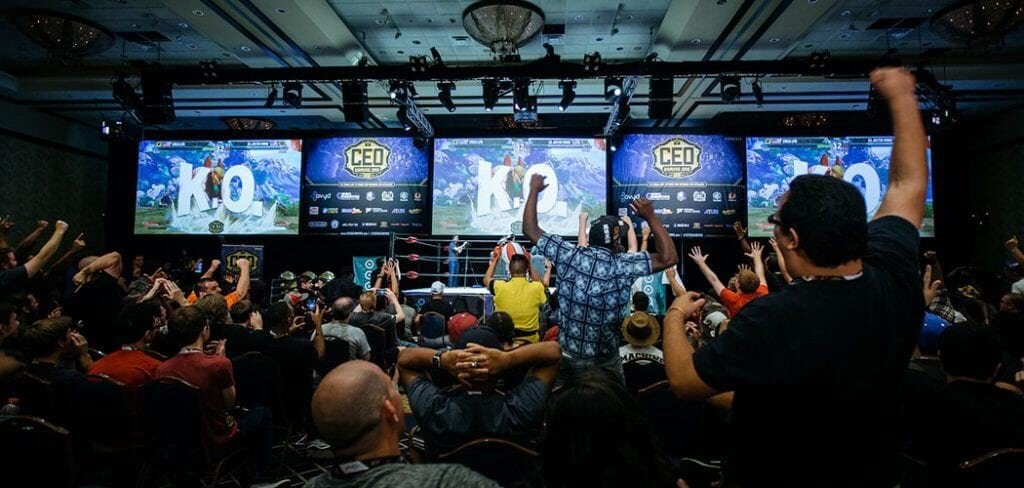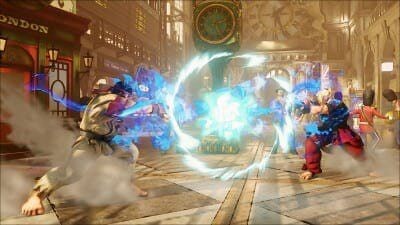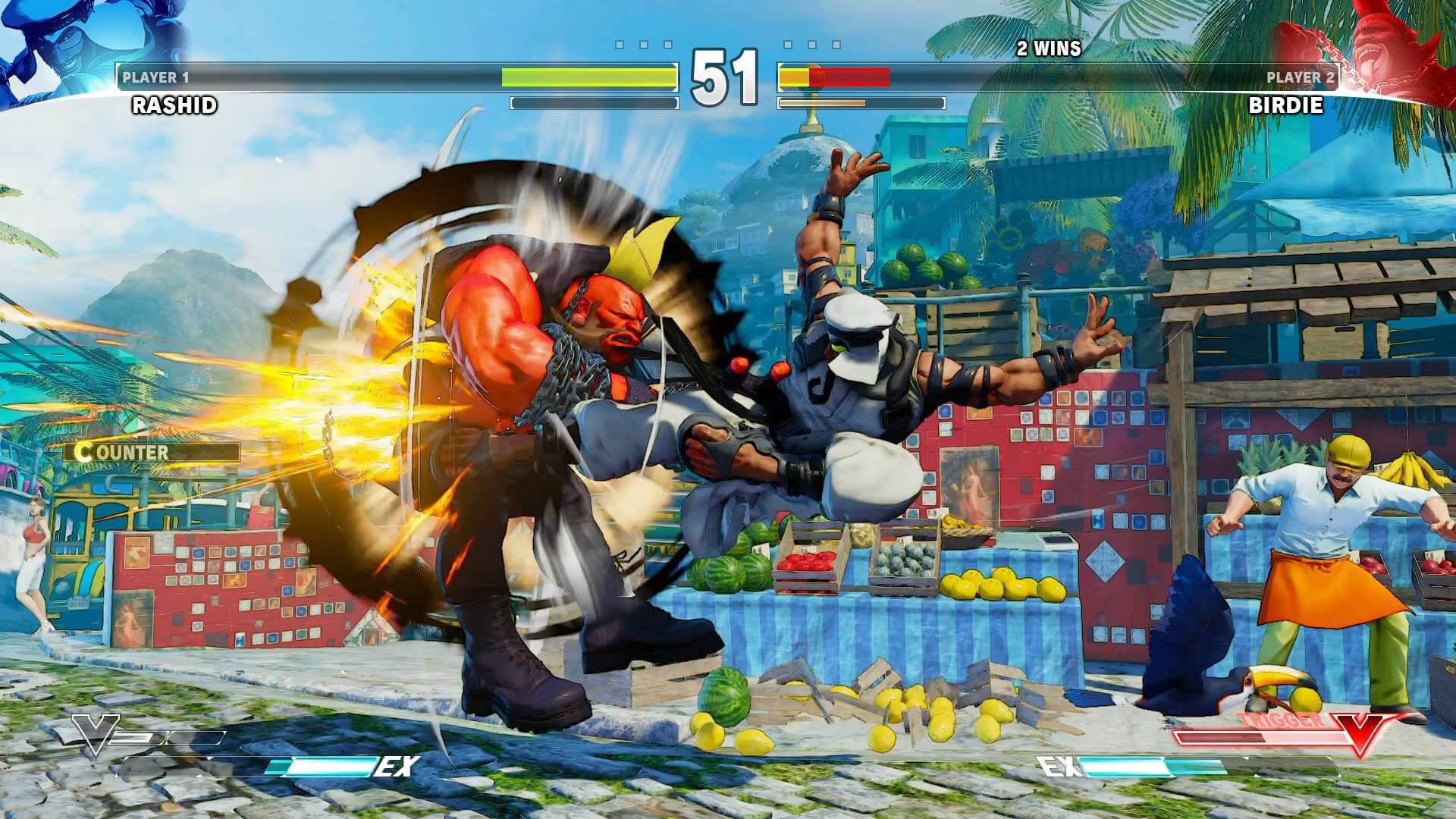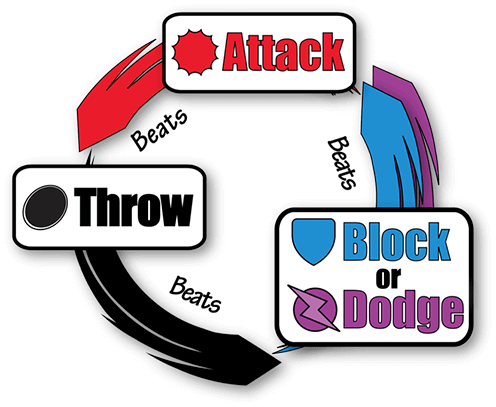A Guide to Watching Street Fighter

In case you haven’t heard, one of the biggest fighting game tournaments was broadcast on ESPN!
In addition, the Capcom Pro Tour has been going strong all year. With an extremely high level of quality coverage, there’s never been a better time to start watching.

This two-part post is going to focus on helping you enjoy Street Fighter as a spectator, rather than a player. Part one will cover the basics of the game, and Part Two will explain common situations and recommend some tournaments to watch. If you’re looking to improve your game, I can’t help you. I’m terrible. Otherwise, continue reading, and get ready to jump into one of the newest, most exciting e-sports out there.
A quick note to Street Fighter veterans: This article is written to new SF viewers, not new players. Some of the advice I give will be helpful for understanding the game, even if it is a generalization, or isn’t true in every case. I’ll also be skipping over some of the complex stuff, like frame data, or input lag. With that, let’s jump right in!
Street Fighter is about the Mind.

If you’ve never watched a fighting game before, it seems like a dull concept. Both players rapidly mash buttons to make their characters on screen punch one another. Whoever attacks more wins. What’s the big deal? It sounds just like a drunk brawl. Why would anyone want to watch it?
The truth is that Street Fighter is much more strategic and deliberate than most people give it credit for. True, matches are quick, and fast reaction times are a requirement for high level play. But one of the core concepts of Street Fighter is that every move can be countered or defeated, and not only that, but it is much easier to defeat a move if you act before your opponent does.
This is usually called “Reading your Opponent“. During a match, players not only react to what their opponent is doing, but must anticipate what their opponent MIGHT do.
Matches rarely last more than a minute, forcing players to act fast and make split-second decisions. When you watch a Street Fighter match, you are watching two players desperately trying to predict and react to one another in real time.They are a test of reaction time, precision, guts, instinct, training, but most of all, psychology.
Both players are trying to find the flaws in their opponents techniques while at the same time trying to adapt and fix their own flaws. The way someone plays at the start of a match and the way someone plays 40 seconds later might be completely different.
Watch the match below and just focus on Ken (yellow hair). Root for him! Hope he wins. Cringe when he gets hit. Don’t worry if you don’t understand everything yet.
Chess may be more deliberate, and poker may have more bluffing but Street Fighter crams the best of both into 90 seconds. It is this speed, both in actions and thoughts that makes Street Fighter so entertaining, and such a joy to watch.
There’s never been a better time

While Street Fighter has been around a long time, this latest iteration is incredibly well suited to viewing and tournaments, more so than any previous Street Fighter game.
Not only is this a gorgeous game, but it has been designed from the ground up to be more appealing to newer players. While the launch bungled the experience a bit, we, as viewers, get to reap the benefits of SFV’s new features.
- Slower paced game. While things can still get hectic, it’s nothing compared to some other fighting games, or even previous Street Fighters.
- High Risk/Reward. Street Fighter V is less twitchy than previous games. It’s harder for players to react to attacks, resulting in aggressive, desperate tactics. This makes games much more exciting to watch, and can create some incredible moments.
- Vibrant. The game simply looks good, and there isn’t a lot of clutter on the screen to distract from the back and forth of the match.
- Capcom Pro Tour. Armed with a budget, support, and excellent organization, Capcom hosts a year-long, world-wide, epic fighting game tournament, split up among a bunch of small tournaments spread all over the world.
The website shows a schedule of upcoming tournaments, and even shows some of the top ranked players! But the best part is the Capcom Fighters Youtube channel. Here you can view the highlights and match results of almost every major tournament. It’s more like watching TV than anything else. Every weekend I get excited about seeing the results of the latest match, or catching up on games that I missed.
The basics
The goal of each match is very simple: Have more health than your opponent when the clock runs out. Note that you need not deplete your opponent’s health bar, and running down the clock is a valid strategy.
Each individual fight or bout is called a Round. The first player to win 2 Rounds wins the Match. Most tournaments requires 2 out of 3 Matches for a win, and are double elimination. The top finals may increase that to requiring 3 out of 5 Matches to win.
Attacking and Blocking
The health of each combatant is displayed at the top of the screen, represented by a bar that depletes as they are hit. Since players move around a lot, the bars don’t always match the same side that the player is on. Thankfully, most tournaments show which health bar is for which player.

Whenever a player is hit, their health bar goes down a little bit (shown in red above). Some hits do more damage than others, but every little bit matters. Most attacks are too fast for players to avoid or jump over. Thus Blocking is the safest, and easiest way to prevent damage.
When an attack is blocked, it does much less damage than it normally would. Instead of losing 100 health from an attack, you might only lose 5. Blocking allows you to survive the attacks of your opponent, and keep yourself alive for longer.
This creates a back and forth rhythm in every match. Player 1 lands a punch, but Player 2 blocks it. Player 2 tries for a strong kick, but Player 1 blocks that. Back and forth, back and forth. So why doesn’t everyone just block everything?
Paper, Rock, Throws

A throw is a special kind of attack that cannot be blocked. They are usually weaker than most attacks, and have very short range. Throws are pretty crappy, as a rule, but they keep people from blocking everything.
Attacks, Blocks, and Throws make up our 3 main interactions, each one acting kind of like a game of paper rock scissors:
- Blocking prevents Attacks
- Throws cannot be Blocked
- Attacks over-ride Throws
While these elements of Street Fighter can be compared to Paper, Rock, Scissors, it is an extreme simplification. In RPS, all choices are equal, but not in Street Fighter. A few examples:
- Attacks are effective and strong. All things being equal, Player 1 will always choose to attack rather than Block or Throw. It is the shortest and easiest path to victory.
- Of course, the Player 2 knows this. So they may decide to just block everything Player 1 does.
- This forces Player 1 to throw, since their attacks aren’t getting through. As soon as Player 2 sees Player 1 start making throws, then Player 2 can start making attacks of their own, forcing Player 1 to block.
Some characters have moves that break the RPS formula, adding more depth and possibilities to a match. A few common examples:
- Fireball – Fireballs fly across the screen, dealing damage. The can’t be attacked or grabbed. Luckily, most fireballs are slow enough that they can be easily blocked or jumped over.
- Command Grab – Normally, when two characters grab each other at the same time, the grabs cancel out, as if both players picked Rock. But command grabs over-ride normal grabs, and usually have much longer range and damage than normal grabs. The only counter to a command grab is to attack.
- Shoryuken – One of the fastest attacks in the game, it beats out any other attacks. The only counter is to block.
- Character quirks – Some characters are stronger in some ways, weaker in others. This is looking less and less like RPS, and more like chess; with strategies and counter-plays.
Not only this, but some blocks, attacks, and throws can only be used at certain times. Maybe a special throw does more damage, but it costs resources. In that moment, the RPS game flips on its head, with throws being more powerful. After the moment passes, maybe another player just unlocked the ability to block without being thrown. The costs and benefits of these three options are always changing as players spend and gain resources. So let’s talk about those.
Resources
In addition to making correct decisions, reading the opponent, and staying cool under pressure, players much also manage a variety of resources, deciding when to spend them, and when to save them.
Critical Gauge

- Earned by: Making attacks and getting hit. Usually fills up by the end of a Round. It does NOT reset, and can be carried over from Round to Round.
- Can be Spent on: Small sections can be spent on making some attacks stronger and faster. When Full, it can be spent to do a Super Attack, usually the strongest and fastest attack available to that character.A player with a fully charged Super Bar is very dangerous, and when you’re watching a match, you can see how things change once someone unlocks the ability to do a Super Attack.
V-trigger Gauge

- Earned by: Performing special moves, and getting hit. Usually fills up about halfway through a round. It does NOT carry over to the next Round. Use it or lose it.
- Spent On: Depends.Each character has their own use for the V-trigger. Sometimes it makes characters stronger for a short time (Ken, Ryu, Chun-Li), while other characters get a powerful attack (Cammy, Vega).
Health Bar

- Earned by: Cannot be recovered, resets each Round.
- Spent on: Taking risks, playing it safe. It may be strange to think of Health as a resource, but it’s actually one of the most important.
Players with more Health can afford to make more mistakes, and you may often hear of a player “Gambling with their Health” when taking a big risk.For example, let’s say you’re trying to do an attack that deals 500 damage. But you have to put yourself in a vulnerable place to make that attack. You try to make it, but you get hit, and take 100 damage. Although it seems silly, it’s worth the hit if you have a chance of making it. Even if you get hit 3 times before you pull off the attack, you’re down 300 health, and they are down 500.Clever players will use their health as a safety net to try risky tactics.
Time

- Cannot be Earned or Spent
Again, Time seems like a strange resource, but it can be a huge part of some matches. The time limit is usually ignored until the clock hits 20 seconds or so. Then things immediately change.Whoever has more health will try to defend their lead and run down the Clock. The person with less health will be forced to take some risks and try to remove the opponents advantage. When a Round goes one for a long time, pay close attention to how it affects players.
Combos
Some attacks can be chained together into a combination, or a “Combo”. There are a lot of complex mechanics and rules about which attacks can combo together, or how difficult it is to perform a combo.
As viewers, we can skip a lot of this stuff, and focus on a few key points:
- Combos are powerful. Stringing multiple hits together can do a ton of damage, and players will always be looking for opportunities to pull off a long, damaging combo attack.
- Combos make Blocking important. If you block the first hit of a combo, then the rest of it is easy to block. If you don’t block the first hit, then it’s too late, and you won’t be able to block anything else until the combo is over. In professional matches, you will see a LOT more defense than offense, since everyone is afraid of “eating a long combo”.
- Combos are difficult. Not only do they require precise timings and button presses, but most combos only work on specific circumstances. This combo can only be performed when the opponent is a certain distance away. That combo can only be done if an opponent misses their throw. Another combo requires the V-trigger bar to be full.
- Combos are really, really cool to watch. They just are! Very flashy, lots of damage, and they can swing someone from being really far behind to coming out ahead. Enjoy them!
This covers some of the basics of the game, and what you see on screen. Part Two is the meat of this guide, talking about some common strategies, what to look for in a match, and specific players/tournaments to watch.
Until then, try watching a tournament from the Capcom Pro Tour Website. I recommend DreamHack.